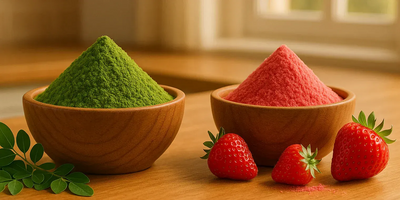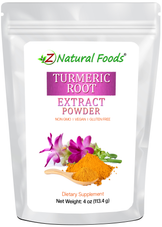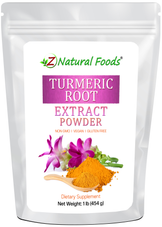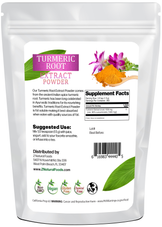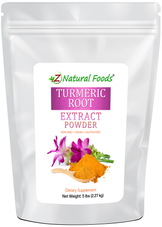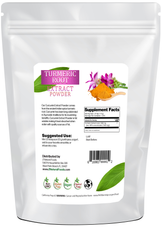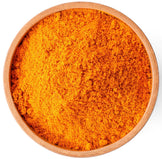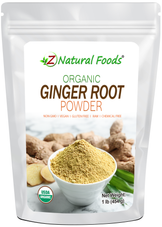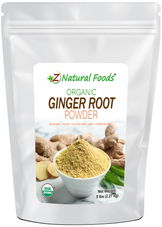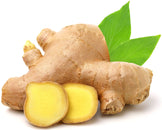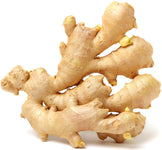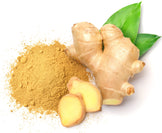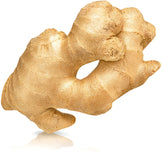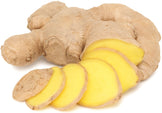Description
Description
When we perceive something as "bad," our instinct is to eliminate it and distance ourselves from it. However, when it comes to how our bodies naturally function, a little bit of "bad" might actually serve a purpose.
Let me explain.
Pain and inflammation are our body's way of signaling that something is wrong. If we completely shut down these signals, we hinder the body's ability to alert us when something needs attention. Instead of trying to suppress pain and inflammation entirely, we should focus on supporting the body's ability to maintain a healthy inflammatory response. This approach allows the body to do its job more effectively, rather than silencing these important signals.
Below are some questions I regularly receive about supporting a healthy inflammation response -- along with my two favorite herbs that may help. As always, if you have questions, concerns or positive insights, please leave a comment at the bottom of this article.
Q: How do you define inflammation?
A: According to the American Heritage Science dictionary: “The reaction of a part of the body to injury or infection, characterized by swelling, heat, redness and pain. The process includes increased blood flow with an influx of white blood cells and other chemical substances that facilitate healing”.
Q: I am very confused about inflammation as some of the articles I read say it is a good thing and other say it is very bad. Is it good or bad?
A: Inflammation is one of the body’s ways to let us know something is wrong. In small, controlled amounts, it is a very important part of the healing process. Like everything else in the body, it is about checks and balances. Therefore, a small amount is good and very healthy, but a large amount is what will wreak havoc on the body. Similar to preparing the body to deal with stress is to have a healthy stress response.
Q: How is inflammation related to the stress response?
A: Unlike stress, which is a true causative factor in the dis-ease process, inflammation is a symptom. This is why when you “treat” inflammation you often only get relief of symptoms.
Stress and inflammation are related because inflammation is another one of the body’s signals that it is under attack and attempting to re-establish homeostasis. The attack or event that caused an inflammatory response was triggered by the stress response.
Q: What is the difference between a substance that works as an anti-inflammatory and one that supports a healthy inflammation response?
A: Anti-inflammatories only work on one area of the entire inflammatory cascade and often have an overall negative effect on the entire cascade. For example, nonsteroidal anti-inflammatories work by reducing the production of prostaglandins which are chemicals that promote inflammation, pain and fever.
There is a group of enzymes that produce these prostaglandins called cyclooxygenases or otherwise known as (COX). There are specifically two types of COX enzymes known as cox-1 and cox-2.
Both of them produce these prostaglandins which promote pain, fever and inflammation, but only cox-1 promotes prostaglandins which activate platelets and protect the lining of the stomach. Compounds that support a healthy inflammation response like curcumin have a positive effect on the entire cascade.
Q: What herbs work to help support a healthy inflammation response?
A: The best way to accomplish this response it to use inflammation modulators like ginger and curcumin on a consistent basis. Please understand that these are not pain killers or anti- inflammatories because they work on a completely different premise.
Q: How exactly does curcumin work in the body?
A: The main job of curcumin is:
- To possibly modulate the activation of Nuclear factor kappa B or the NfkB response which is at the top of the inflammatory cascade.
- Nuclear factor kappa B is a protein complex that turns on genes that produce inflammation. Its three main jobs are transcription of DNA, cytokine production and cell survival.
- By modulating its action this in turn prevents the rest of the cascade like cyclooxygenases (COX 1 and 2), Lipoxygenase (LOX) enzymes and inducible nitric oxide synthase from responding in an unhealthy way.
The body’s responses to any stressor is a series of checks and balances. The purpose of these checks and balances is to make sure the body responds to these events in a healthy manner. The end-goal should always be to support the body’s ability to have a healthy response as this will promise less damage and quicker recovery.
About Michael Stuchiner
Michael Stuchiner is an experienced Master Herbalist, the Head of Education for Z Natural Foods, a teacher and an accomplished author. With a 16-year specialization in medicinal herbs, Mike also has a vast knowledge in tonic and adaptogenic herbalism. Mike has enjoyed a 25-year career as an elite-level competitive powerlifter where he learned to heal his ‘mind and body’ as an avid user of herbal remedies.
As an “in-the-trenches” herbalist, Mike has done more than 85 speaking engagements, consulted with clients ranging from young to elderly, worked with athletes in virtually all sports and with clients who have “dis-ease” states of a wide variety. Mike also mentors student Master Herbalists and will continue to teach the next generation to grow a deeper wisdom of the human body through appropriate herbal remedies.
For Bulk inquiries and custom formulations click here.

